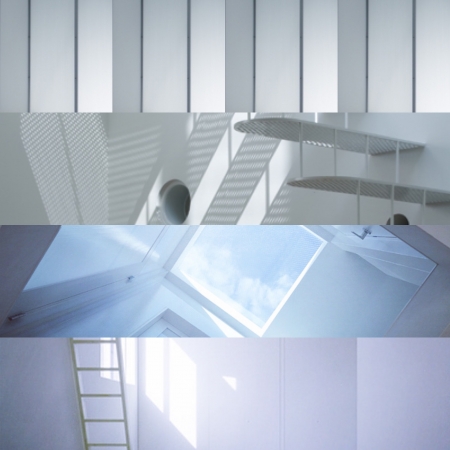記憶からの抽出
記憶に残るものは何だろうか。例えば小さい頃の記憶として今は無い母方の実家で残っているのは、夏の夕暮れのオレンジ色の西日がさす部屋である。あるいは急な階段、2階の窓から見える景色であり、身体の動きと一緒に目が覚えており、匂いも同時にしてくる。それらは何でもないことであり、特別なことではないが他では体験できないことであった。身体に目がついているという当たり前のことを記憶が教えてくれる、鼻もそうであり、五感を改めて身体を通した記憶で感じる。
五感を通した記憶から何を抽出するかを考える。抽出したものから形をつくることで記憶を継承していくことが可能になると考えた。記憶という形が無いものに形を与えるためには、形につながる情報が必要であるが、最終的に形になるものを装飾として限定することにより抽出する情報の抽象度を上げることができ、様々な要素を使えるようになるのではないかと考えた。
"Extraction from memory"
What is memorable? For example, what I remember when I was little is the room where the orange west sun shines at dusk in the summer, which remains in my mother's parents' house. Or the steep stairs, the view from the window on the second floor, the eyes remember with the movement of the body, and the smell comes at the same time. They were nothing, not something special, but something that couldn't be experienced anywhere else. The memory tells us that the eyes are on the body, and so is the nose, and the five senses are felt through the body again.
Think about what to extract from the memory through the five senses. I thought that it would be possible to inherit the memory by creating a shape from the extracted material. In order to give shape to something that does not have the shape of memory, information that leads to the shape is necessary, but by limiting what will eventually become the shape as decoration, the degree of abstraction of the information to be extracted can be increased. I thought that I could use various elements.


